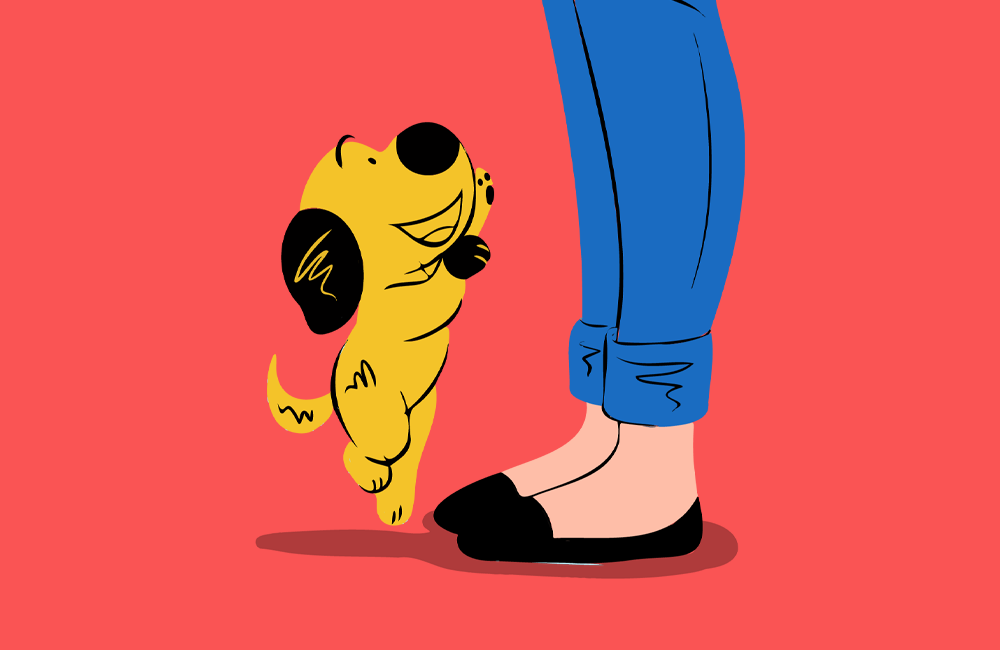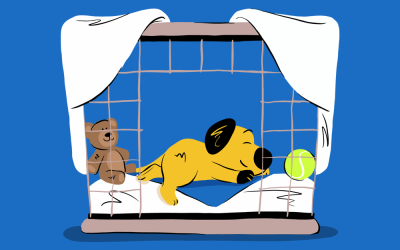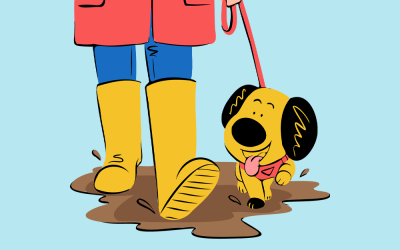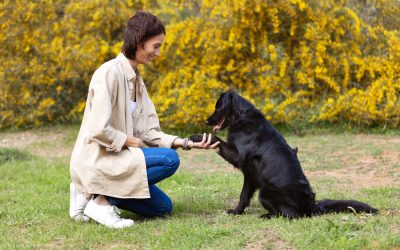How Do You Stop Your Dog From Jumping On People?

Written by Petrina Firth, Zigzag Training Coach, Dog Trainer and Behaviorist for Odie Pet Insurance
“I love being jumped on by a dog!” said no one ever. While most of us adore our canine chums, having an over-enthusiastic pup launch themselves at us—leaving muddy paw prints, scratches, or stealing our lunch—isn’t exactly a welcome greeting.
The good news is that jumping, while a common problem, is also a perfectly manageable dog behavior to change with proper training.
Why Do Dogs Jump Up?
For a number of reasons actually, and understanding the ‘why’ helps with getting them to stop!
Reasons why dogs jump up:
- It’s a natural greeting behavior
- To get attention (even negative attention works!)
- When they’re super excited
- To get closer to your face
- They’re feeling anxious or want reassurance
- Because it’s worked for them in the past
- They never learned not to do it
Management First
Managing your dog’s jumping behavior is both simple and effective. By controlling your pup’s environment with basic tools like a leash or baby gate, you can prevent unwanted jumping before it starts. Think of management as setting up your dog (and your guests) for success – it’s not just about good manners, it’s about creating positive interactions from the start.
Jumping Up at Visitors
Let’s look at smart ways to handle different visiting scenarios.
The Doorbell Challenge
When that doorbell rings, most dogs transform from calm to chaotic in seconds! Their excitement levels skyrocket, and if you have a barker, they’re already overstimulated before the door even opens. Expecting good behavior at this point is like asking a toddler to solve math problems during a sugar rush!
Quick Visits vs. Planned Visits
For quick visits like deliveries, keep it simple: use a leash or baby gate to manage your dog. There’s no need to turn every package delivery into a training opportunity. For planned visits with friends and family, you can use these as teaching moments but still start with management. Keep your dog on a leash before guests arrive, giving you control over the greeting while rewarding calm behavior.
Building Better Greetings
While advanced skills like “go to your mat” can be taught later, these need to be trained and solid in calm situations first. Remember that visitors might trigger your dog’s protective instincts, which can contribute to overexcited greetings. Having a clear alternative behavior helps channel this energy positively.
Essential Management Tools to Stop Jumping Up:
- Keep a leash by the door.
- Use baby gates strategically.
- Create a designated “greeting spot”.
- Store treats near the entrance.
- Set up a tether point away from the door.
Tip: Every successful jump reinforces the behavior, so preventing practice through management isn’t just a temporary solution – it’s a crucial part of long-term training success.
Jumping Up in Public
Jumping up in public can also be managed by using one simple tool – a leash! Yes! If you don’t want your dog jumping up on people in the park or in public places the easiest thing to do in the short term is to keep them on a leash.
Keep your dog on a leash and maintain a safe distance from others when out in public until they’ve learned appropriate greeting manners. You wouldn’t let a stranger run up and hug you without permission – your dog needs to learn the same social boundaries.
Teaching Appropriate Greeting Behavior
Now you’ve managed your dog and stopped them from practicing the jumping up behavior, you want to teach them what they should do instead. One of the easiest things to teach is a sit to greet, once trained you can use this out in public and at home.
5 Steps for Teaching Sit To Greet
1. Start With The Basics
- Begin in a quiet room with minimal distractions. Ask your dog to sit in their usual way.
- Practice this until your dog can hold their sit for at least 10 seconds while you stand still.
- Make sure they can maintain the sit while you hold treats and move your hands around.
- Only move to the next step when your dog’s sit is reliable in calm situations.
2. Add Movement (Just You)
- With your dog in a sit, take one step back.
- Return immediately if they stay sitting and reward.
- Gradually increase the number of steps you take away from them.
- Return to your dog while they maintain the sit. If they pop up, immediately turn your back and start over.
- Once successful, start approaching with more energy in your step to create excitement.
3. Practice With Family
- Have family members stand about 10 feet away while your dog sits next to you.
- Ask them to approach slowly while you keep your dog sitting.
- The moment your dog breaks the sit, the family member must immediately stop and turn away.
- When your dog maintains the sit, the family member can briefly pet under the chin (avoid top of head pats which encourage jumping).
4. Increase Difficulty Gradually
- Begin having family members approach with more enthusiasm in their step.
- Practice in different rooms of your house, then in your yard.
- Mix up who approaches and how they greet (some quiet, some more excited).
- Slowly extend the greeting time from 2-3 seconds to 10-15 seconds.
5. Build reliability With Strangers
- Arrange practice sessions with friends your dog hasn’t met.
- Keep your dog on a leash and maintain enough distance that they can focus on you.
- Ask helpers to approach only when your dog is sitting calmly.
- Reward with high-value treats when they maintain their sit during the greeting.
Tip: Excitement and arousal typically make dogs jump up, so keep that in mind when you practice.
Looking for more advice to curb jumping, teach important life skills, or improve your dog’s training and behavior? Download the Zigzag app! We offer personalized programs designed for your pup’s age and breed, and our friendly team of dog trainers is here to chat with you 24/7.




